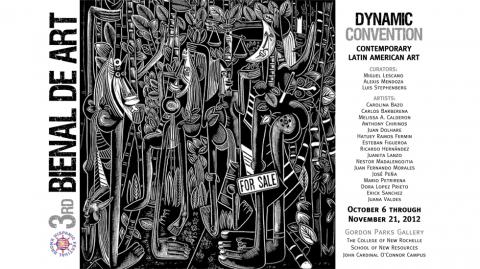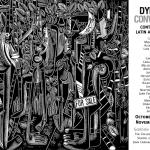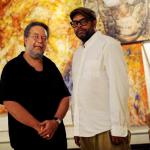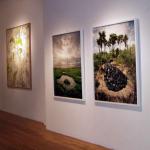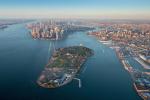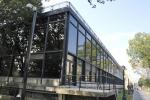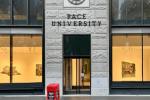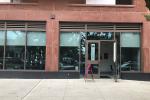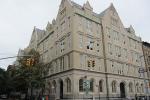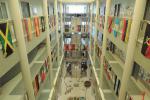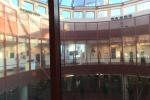Presented in 2012, the Third Bronx Latin American Art Biennial was called Dynamic Convention and was exhibited at the The Gordon A. Parks Gallery & Cultural Arts Center Gallery on the John Cardinal O’Connor Campus, South Bronx. A call for artwork, to extend an invitation for a collective exhibition with the participation of artists from Hispanic descent or those with a defined cultural link was made by curators Miguel Lescano, Alexis Mendoza, and Luis Stephenberg. 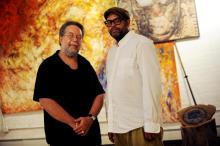 The timing of the Third Latin American Art Biennial was synchronized to biennales in Sao Paulo and La Habana, and in the San Juan Poly/Graphic Triennial, Trienal Del Caribe in Santo Domingo. These public events that have their roots in the artistic activity of Latin America, maintain their regenerating essence.
The timing of the Third Latin American Art Biennial was synchronized to biennales in Sao Paulo and La Habana, and in the San Juan Poly/Graphic Triennial, Trienal Del Caribe in Santo Domingo. These public events that have their roots in the artistic activity of Latin America, maintain their regenerating essence.
The Third Bronx Latin American Art Biennial seeks to creatively explore illusory correlation, the phenomenon of seeing a relationship between objects and events when no such correlation actually exists.
Dynamic Convention features the work of contemporary Latin American artists Carolina Bazo, Carlos Barberena, Melissa A. Calderon, Anthony Chirinos, Juan Dolhare, Hatuey Ramos Fermin, Esteban Figueroa, Ricardo Hernández, Juanita Lanzo, Nestor Madalengoitia, Juan Fernando Morales, José Peña, Mario Petrirena, Dora Lopez Prieto, Erick Sanchez, Juana Valdes.
The first installment of the 2012 art show, was at Bronx Art Space, 305 E. 140th St. in Mott Haven, and showcased the talents of 14 artists.
Among the works on display was “Sunrise,” by photographer, Alejandro Duran, of Mexico. The photograph depicts a lush tropical beach landscape tainted by water bottles that have washed up on shore from some 50 different countries.
“While you are looking at something beautiful,” Mendoza said, “you feel guilty at the same time because you can see how bad things are in the environment.”
In an untitled piece, painter Amaru Chiza, of Ecuador, creates a surreal world on canvas.
“It is abstract, so it doesn’t show any figures, just forms,” Stephenberg said. “But the way he uses those forms are so effective in creating a world you think is real, but at the same time, you can’t really define what it is.”
Other venues included The Mott Haven Gallery, the Bronx Museum of the Arts, the Gordon A. Parks Gallery, the Bronx Music Heritage Center, and the Boricua College Art Gallery.
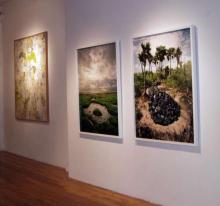 Illusory Correlation was presented at the Poe center and its title suggests the elucidation of what happens when we stand in front of an art work. Visual appearance of objects is given by the way in which they reflect and transmit light. The other sides of appearance respond to the meaning of symbolic reference constructed as an icon that stands for an object by signifying or representing it either concretely or by analogy. Artists address issues such as, social communication, discrimination and ancestry heritage are showing their works in all genres and mediums representing the Hispanic culture.
Illusory Correlation was presented at the Poe center and its title suggests the elucidation of what happens when we stand in front of an art work. Visual appearance of objects is given by the way in which they reflect and transmit light. The other sides of appearance respond to the meaning of symbolic reference constructed as an icon that stands for an object by signifying or representing it either concretely or by analogy. Artists address issues such as, social communication, discrimination and ancestry heritage are showing their works in all genres and mediums representing the Hispanic culture.
The exhibit closed with a special event at the Edgar Allan Poe Park Visitor Center Gallery, 2640 Grand Concourse, Bronx, NY.
Featured artists include Miguel Trelles, Ismael Checo, Ines Tolentino, Leenda Bonilla, Rodolfo Edwards, Miguel Martinez Hector Anchundia, Marina Gutierrez, with video art by Edin Velez, Jesus Algovi and Katya Cazar. The curators are Miguel Lescano, Alexis Mendoza, and Luis Stephenberg.
Curatorial Statement:
Once again we summon the workers of culture, with the purpose of fostering reflection regarding the dialectical nature of art. We’ve chosen the theme “Illusory Correlation” as regular behavior and decodifying agent between two possible variables. Both represent a human operation in the exercise of association, whose linguistic principles bear a content that corresponds to the social identity. From this dilemma, several axioms emerge in which the art is a protagonist in the construction of the worldviewc(Weltanschauung), which also includes the general perception or cognition and the act of collective conscience.
The fundamental processes as an active influence method, that tries to guide people into adopting new needs and ideas, or aim to a parallel behavior through rational oremotional measures; being the stimulus that takes shape characterizing itself as a medium/message in an act of dynamic convention, that places itself in time and space, manifesting the technical/mechanical capacity of the artistic being. If we place ourselves in the contemporary era of informational electronic power, the global subconscious is conceived as a space in the no-space where the ideology of the dominant production models is perpetuated, like T. Adorno would say, even though it’s not the only ideology that looks for preeminence. Consequently, the advance of the valorization and mercantillization of cultures establishes the particular necessity of an inductive creative artisanal elaboration, destined to the configuration of the great window to the world.
What we believe to see that doesn’t exist, and what does exist but we can’t see. The current interpreted perception is the illusory correlation instituted under a global practical order that enslaves. In contrast, the ideological compromise of several groups of creators is found in the reductionist resistance to the idea, the urgent possibility of a sustainable and natural balance. In all social sectors, the denial of the great window as an interpretation claims the cognitive degree of the concept, the promise to effect changes in the general behavior. For the creative sector it means the constant lookout for a language that is able to materialize a parallel worldview, and which incites recognition of the hidden threads of the pattern and picture of appearances.
Art, and non-art as well, participate in its new fast capacity space (that entails a huge abysmal vertigo), self-assessing the current development, throughout the establishment of the pragmatic association with defined liberating purposes, in relation to the work and manufacture of the message/media. Let us declare the autonomy in the interpretation of the world, the cosmovision observed through the prism in which the dimensions of the spectrum are radiantly multiplied and diversified. Let each beam express its individual color, but let it merge, in its entirety and purpose, with the concrete and universal image, as an event that is engraved in the collective memory.
We invite you today to decipher the vivential experience in a referential way within a creative project; let us be part of a multicultural encounter of permanent, solidary and firm dialogue. The intention of the event organizer is to set up an art exhibition within an international framework and objectively maintain decentralization of the exhibition spaces that play an important role in terms of the idea of accessible art. We have chosen the traditional vehicle of the Biennale and have packed it with the culture that seeks fusion in syncretism, a fusion that is applied to the creation of new languages.
The Bronx Latin American Art Biennale creates alternative spaces for the evolution of developing communities. It is our intent to foster Latin American art by leaving an irrefutable testimony of its amazing diversity; we establish the dynamic interrelation art/artist/society illustrated in a living model. The Bronx Latin American Art Biennale concentrates on the theory of communication as human Exchange that entails the creative art and tries to conjugate the global space with the less visible sources of Latin American art. We are determined to turn the event, and our county, into the central point for cultural work at a transnational level.
The county of the Bronx is a dwelling of many ethnic groups, the resonance of its cultural values, goes to the compass with the diversity that characterizes the city of New York. The Biennial of Latin-American Art complies with the revitalizing function that characterizes the social groups in the regeneration of its custom and values. This event aspires to reunite a variety of media including photograph, sculpture, electro-digital, painting (includes graffiti on wall), video, graphic, mixed media, performance, installations, and others.
The curators statement was part of the downloadable PDF Application form, an open call to Latin American artists.
Holly Bynoe. "The Third Bronx Biennale of Latin American Art 2012 announces Call for Works". 8 June 2012. Arc, The Magazine. Online. Accessed 16 Nov. 2016.
